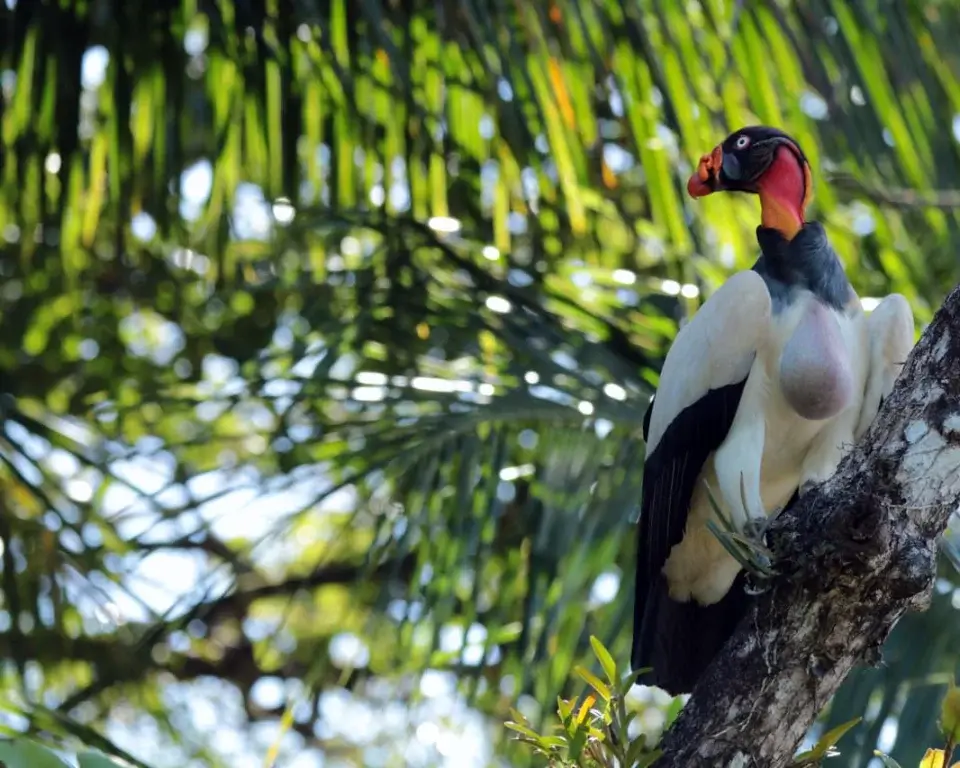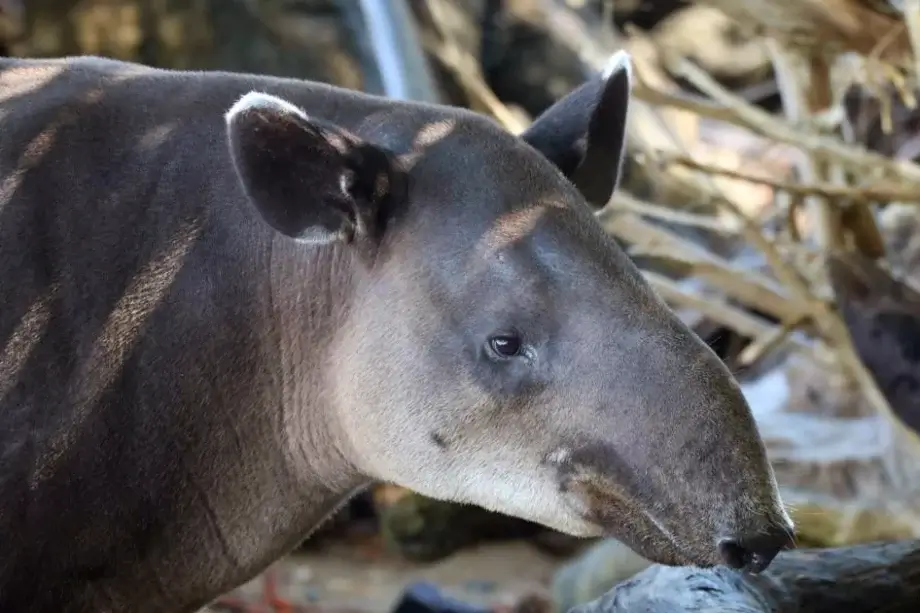One of Costa Rica's true natural gems
Corcovado National Park
Known for holding 3% of the biodiversity on this side of the planet, Corcovado National Park is famous for being "the Amazon of Costa Rica". Once nearly inaccessible, Corcovado is now very popular among tropical ecologists and eco-tourists that love the abundance of plant and wildlife.



Amazing trip to Corcovado NP
Had a day trip via speedboat to Corcovado National Park as part of a group tour of Costa Rica and this day was one of the top highlights. The staff at Bahia Aventuras and all very polite, friendly and helpful. The guides Ramon and Daniel were very knowledgeable and did the best to find wildlife and we had a really lovely lunch on the beach. Overall, an amazing experience, highly recommend them.
Southern Costa Rica's must-see national park
Discover Corcovado: Costa Rica’s Wild Heart
Corcovado National Park is nature’s masterpiece, the must-visit destination for anyone visiting Costa Rica and seeking an authentic wilderness experience. This 164-square-mile expanse on the Osa Peninsula has been called “the most biologically intense place on Earth” by National Geographic.
As you trek through its dense rainforests, you’ll be surrounded by a staggering array of life, so keep your eyes and ears open and you’ll:
- hear the haunting calls of howler monkeys
- see scarlet macaws streak the sky with their vibrant plumage
- catch a glimpse of the elusive jaguar
- spot an endangered Baird’s tapir
With over 500 tree species that create a verdant canopy, Corcovado is home to 140 mammal species and more than 400 bird species. Its wildlife combined with its untamed rivers, thundering waterfalls, and pristine beaches, Corcovado offers a complete immersion into the raw beauty of Costa Rica.
Family Adventures in Corcovado
Even if you’re not hardcore wildlife enthusiasts, the park’s incredible biodiversity offers something to captivate every member of the family. Guided day trips from Uvita are ideal for children over 10, providing a safe and educational introduction to the rainforest.
Imagine your kids’ excitement as they spot their first troop of capuchin monkeys swinging through the trees, or hear the thunderous roar of howler monkeys echoing through the forest.
The park’s well-maintained trails are manageable for most fitness levels, with plenty of opportunities to rest and observe nature, from:
- colorful poison dart frogs
- lazy sloths
- even a tapir taking a mud bath!
With its mix of adventure, education, and natural beauty, a trip to Corcovado from Uvita promises to create lasting memories for families, sparking a love for nature that will stay with your children long after you’ve returned home.
Adventure to Corcovado with us for the best wildlife tour in Costa Rica!
Get to know the Corcovado National Park
About the protected area
Costa Rica’s national parks are must-see destinations for nature-lovers, and the protected areas in Osa are no exception. Find out more about the Corcovado National Park below and then join us on a tour.
General information
About
Corcovado National Park established on October 24, 1975 is located near the port of Puerto Jimenez, across from the bay of Golfito on the pacific south coast on the Osa Peninsula and has 42,560 Terrestrial hectares and 3,354 Marine hectares. In 1975, 300 farmers living in the area were compensated for their land and relocated elsewhere. Until 1978, there was little access by land to the Osa Peninsula and the population in the region was scarce. Since 1978, the Corcovado National Park has been destined exclusively for conservation, scientific investigation, environmental education and eco-tours. Corcovado Park is one of the rainiest regions in the country with records of up to 5,500 mm. of rainfall on the highest peaks. The park is very popular with tropical ecologist and eco-tourists that love the abundance of plant and wildlife. It offers 5 ranger stations which handle several services. The Park stations can assist with tent sites, food, helicopter services in emergencies and general information.
Primary action
The amazon of Costa Rica
Rainforest
Famous for being–the Amazon of Costa Rica—the Corcovado National Park is the largest stronghold of primary forest on a Pacific coastline, and is famous for holding 3% of the biodiversity on this side of the planet. Some say that it is “the most biologically intense place on Earth” and it is widely considered the crown jewel in the extensive system of national parks and biological reserves spread across the country.
Primary action
Flora and fauna
Biodiversity
In Corcovado visitors can witness the unique combination of marine and land ecosystems. There are several hiking trails through the park, many of which are long, and take many hours to travel taking visitors to the most deserted and pristine rainforest wilderness with spectacular displays of nature. The area holds thousands of species of flora and fauna, many unique to the area and others which have disappeared from other regions or are in danger of extinction. Approximately, 6,000 insects (including the 123 different butterflies discovered so far), 500 trees (a fourth of all the tree species that exist in Costa Rica), 367 birds, 140 mammals, 117 amphibian and reptiles, and 40 freshwater fish species live here in coexistence. In this park you will find the biggest tree in all the country, an enormous silk cotton tree that reaches a height of over 70 meters. Studies carried out in the park have recorded 20 species of saurians, 33 of ophidians or snakes, 48 of toads and frogs, and 7 of turtles, besides salamanders, crocodiles and caimans. Three species of amphibians that are especially noteworthy are the glass frogs, which are so transparent that their internal organs can be seen through their skin, and the poison dart frog (endemic specie of Costa Rica). The Llorona beach is a frequently used nesting site for marine turtles: olive ridley turtle, leatherback turtle, green turtle and hawksbill turtles.
Primary action
Habitats
Ecosystems
Main habitats found in the park: montane forest, cloud forest, alluvial plains forest, swamp forest, holillo forest, freshwater herbaceous swamp, mangrove swamp, and rocky and sandy vegetation.
Primary action
Bird species
Birdwatching
Birds found here: scarlet macaw (located in the park are large groups), king vulture, white hawk, short-billed pigeon, tovi parakeet, bronze-tailed sicklebill, keel-billed toucan, prevost cacique, plush tanager, great tinamou, Mexican tiger-bittern, and northern jacana, harpy eagle.
Primary action
Animals
Wildlife
Animals found here: tapir (endangered species), jaguar (endangered species), cougar (endangered species), ocelot (endangered species), giant anteater (endangered species), white-lipped peccaries, howler monkey, white-faced capuchin monkey, spider monkey, and squirrel monkey, American crocodile (endangered species).
Primary action
Ready to visit Corcovado National Park?
As a leader in marine tourism, we take great care in ensuring the safety of our guests, staff, and the wildlife. Join us for an unforgetabble experience!





